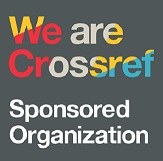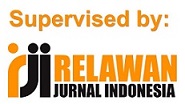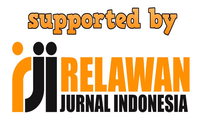SINO-KOREAN VOCABULARY LEARNING STRATEGIES AMONG INDONESIAN KOREAN LANGUAGE LEARNERS
Abstract
Keywords
Full Text:
PDFReferences
Asyiah, D. N. (2017). The vocabulary teaching and vocabulary learning: Perception, strategies, and influences on students’ vocabulary mastery. Jurnal Bahasa Lingua Scientia, 9(2), 293–318. https://doi.org/10.21274/ls.2017.9.2.293-318
Byon, A. S. (2012). Vocabulary learning strategies of advanced KFL learners: Using vocabulary journal assignment. The Korean Language in America, 17, 236–254. https://www.jstor.org/stable/42922367
Cho, M. M. (2015). 외국인을 위한 한국어 한자어의 빈도 조사 및 분석 [Frequency survey and analysis of Sino-Korean vocabulary for foreigners] (Master’s thesis). Graduate School of Yonsei University.
Creswell, J. W. (2015). Educational research: Planning, conducting, and evaluating quantitative and qualitative research (5th ed.). Pearson.
Hasby, F. (2017, February). Pendapat mahasiswa dan alumni mengenai pengadaan kelas Hanja-Korea di Prodi Korea FIB UI. Paper presented at the Indonesia and Korean Studies Conference, Bandung. Retrieved from https://www.researchgate.net/publication/331073736_Pendapat_Mahasiswa_dan_Alumni_mengenai_Pengadaan_Kelas_Hanja-Korea_di_Prodi_Korea_FIB_UI/citations
Holidazia, R., & Rodliyah, R. J. (2020). Strategi siswa dalam pembelajaran kosa kata bahasa Inggris. Jurnal Penelitian Pendidikan, 20(1), 111–120.
Jung, M., & Cho, Y. Y. (2006). Chinese character education in teaching Korean as a foreign language: A new paradigm of cognitive expansion. The Korean Language in America, 11, 64–83.
Li, Y., Wei, H., & Li, Y. (2022). Second language teaching with a focus on different learner cultures for sustainable learner development: The case of Sino-Korean vocabulary. Sustainability, 14(13), 7997. https://doi.org/10.3390/su14137997
Muscanto, I. (2018). The impact of hanja-based syllables on Korean vocabulary learning. The Korean Language in America, 22(2), 99–121. https://doi.org/10.5325/korelangamer.22.2.0099
Nation, I. S. P., & Waring, R. (1997). Vocabulary size, text coverage and word lists. In N. Schmitt & M. McCarthy (Eds.), Vocabulary: Description, acquisition and pedagogy (pp. 6–19). Cambridge University Press.
Nation, I. S. P. (2006). How large a vocabulary is needed for reading and listening? The Canadian Modern Language Review, 63(1), 59–82. https://doi.org/10.3138/cmlr.63.1.59
Oxford, R. L. (1990). Language learning strategies: What every teacher should know. Newbury House Publishers.
Panumma, S. (2021). A study on the teaching and learning method of Sino-Korean word for non-Chinese-speaking learners: Focusing on using vocabulary guessing strategies. Korean Language and Cultural Studies Journal, 3(1), 135–158.
Schmitt, N. (1997). Vocabulary learning strategies. In N. Schmitt & M. McCarthy (Eds.), Vocabulary: Description, acquisition, and pedagogy (pp. 199–227). Cambridge University Press.
Schmitt, N. (2000). Vocabulary in language teaching. Cambridge University Press.
Seow, Y. (2021). Teaching Sino-Korean vocabulary with LBH method in a multinational classroom: With a special focus on Korean academic reading class. Journal of Humanities, 83, 151–176.
Sitaresmi, D., Thamrin, L., & Nirmalasari, Y. (2024). Strategi pembelajaran kosakata bahasa Mandarin mahasiswa pendidikan bahasa Mandarin. JIIP - Jurnal Ilmiah Ilmu Pendidikan, 7(1), 844–851. https://doi.org/10.54371/jiip.v7i1.844-851
Song, J. (2005). The Korean language: Structure, use and context. Routledge.
DOI: https://doi.org/10.30743/ll.v9i1.11323
Refbacks
- There are currently no refbacks.
Fakultas Sastra
Universitas Islam Sumatera Utara (UISU), Medan
Jl. Sisingamangaraja Teladan Medan 20217
Telp. (061) 7869911, e-mail: language_literacy@sastra.uisu.ac.id









